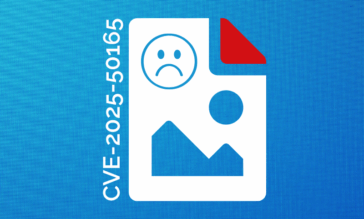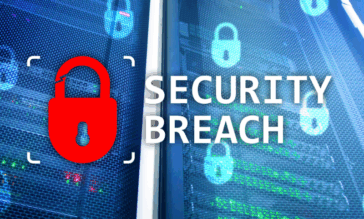Medusa Ransomware: How to Break the Kill Chain Before It Starts

An advisory warns hospitals and schools across the globe: Medusa ransomware isn’t just locking systems. It’s leaking sensitive data and disrupting lives.
Issued jointly by CISA, the FBI, and MS-ISAC, the recent alert outlines a growing wave of Medusa ransomware activity targeting critical infrastructure. The American Hospital Association followed up with a stark message of its own: Medusa isn’t just a technological threat, it’s a human one.
Whether it’s patient health records, classroom documents, legal filings, or supply chain data, Medusa doesn’t discriminate. Hospitals are being forced to divert patients. Schools are watching private student data get dumped on dark web forums. And insurance firms, public agencies, and manufacturers aren’t far behind.
Medusa first appeared in 2022 as a typical ransomware strain. But since then, it’s evolved quietly, strategically into a full-blown Ransomware-as-a-Service (RaaS) operation. No longer a lone actor, Medusa now functions more like a commercial enterprise: recruiting affiliates, contracting access brokers, running extortion campaigns, and publishing victim data to maximize pressure.
The result? A threat that’s not just more effective but more coordinated, more scalable, and far more invasive. If it’s valuable, it’s a target, and once it’s taken, paying the ransom may only be the beginning.
What Makes Medusa So Dangerous
Medusa’s damage isn’t limited to encrypted files. It’s about total operational disruption. Unlike blunt-force ransomware, Medusa runs a multi-stage, coordinated campaign.
Access is typically gained through Initial Access Brokers (IABs) who sell stolen credentials or footholds in target networks. From there, attackers move laterally using legitimate tools like PowerShell, avoiding detection while quietly exfiltrating sensitive data via Tor channels. Encryption comes only after attackers fully map out systems and identify leverage points.
That’s when the extortion begins. Medusa uses double extortion, demanding payment for both decryption and data suppression, and has escalated to triple extortion, with additional ransoms following supposed insider theft or threats of further leaks.
The results are well known: Minneapolis Public Schools, Toyota Financial Services, and multiple healthcare providers have faced weeks of downtime, data exposure, and regulatory scrutiny.
Medusa goes beyond just locking systems to asserting control. It blends stealth, coercion, and operational knowledge into a ransomware model built for scale and fear.
The Cybercrime Ecosystem Behind Medusa
It starts with purchased access credentials, remote desktop logins, or unpatched systems bought from brokers on dark web forums. Once inside, affiliates move laterally, escalate privileges, and quietly exfiltrate data before launching the ransomware payload. After encryption, victims are named and shamed on Medusa’s dark web leak site, completing the cycle: access → movement → theft → encryption → exposure.
But Medusa doesn’t stop there. Its operators understand the power of visibility, and they use it. The group amplifies pressure by posting victim details not just on the dark web, but also on Telegram, Facebook, and X (Twitter) under public-facing accounts like “OSINT Without Borders.” These are designed to shame victims into paying faster, especially in industries where trust and reputation are everything.
Everything about the operation feels deliberate and professional. The branding is consistent. The extortion messages are scripted. Even the leak site has a structure complete with countdown timers and status updates. Medusa doesn’t just demand payment. It orchestrates a campaign of coercion designed to leave victims with no good options and no place to hide.
Why Traditional Security Isn’t Enough
Most security strategies still rely on detecting, spotting, and blocking the threat. But Medusa was built to avoid being spotted in the first place.
Its tools include fileless malware, in-memory loaders, side-loaded DLLs, and obfuscated PowerShell scripts designed to evade traditional defenses. These methods don’t leave obvious traces and often use legitimate tools to mask malicious intent.
Legacy tools focus on known signatures even when emails and files are scanned. Medusa, on the other hand, constantly changes payloads. What worked last week gets replaced with something new, tailored to the next victim.
Meanwhile, malicious code hides in plain sight in ZIPs, Office docs, or PDFs that look harmless but carry dangerous embedded components.
Detection tools still have value, but they react too late against a threat like Medusa. By then, the damage has already been done.
Where Medusa Starts: File-Based Initial Access
Medusa attacks begin, more often than not, with a file. Phishing emails carrying weaponized attachments. Compromised documents that look like invoices or onboarding forms. Malicious configuration files posing as harmless tools, like a fake Notepad++ updater bundled with a GUP executable and an XML side-loader. These files don’t raise alarms. They look familiar, functional, and business-as-usual. And that’s exactly the point.
Because traditional security tools scan for known threats or surface-level anomalies, these files are often ignored or only superficially inspected. The payload isn’t obvious. It’s hidden behind layers of obfuscation or embedded inside macros, scripts, or side-loaded components that evade basic filtering.
By the time the threat is recognized, if it ever is, the attacker is already inside, quietly staging the next move.
That’s where Votiro flips the script by making files safe before they ever reach the endpoint.
Disarming Medusa at the Start of the Kill Chain
Stopping Medusa is about breaking the kill chain before it begins. So, instead of scanning files for known threats, Votiro’s Advanced Content Disarm and Reconstruction (CDR) technology flips the model: it treats every file as potentially dangerous, and only allows in what’s provably safe.
How Votiro CDR Works: Incoming files are completely disassembled down to their core elements before ever reaching an endpoint. Then, each file is rebuilt from the ground up – macros and all – using only known-good components.
All hidden threats, exploits, embedded scripts, malicious macros, or obfuscated loaders, even inside nested ZIP archives and password-protected documents, are quickly and automatically stripped out. The result is a fully functional file with zero exposure to hidden payloads.
There’s no sandboxing, no quarantining, no waiting. No reliance on signatures or updated malware databases. Just files that are sanitized in real time, without disrupting workflows or alerting attackers. By removing the weapon before it is drawn, Votiro ensures that Medusa and threats like it never get the chance to launch.
Why Proactive CDR Matters
A ransomware attack isn’t just a financial risk in healthcare, education, and public infrastructure sectors. It’s a life-altering disruption. When Medusa strikes, the fallout isn’t measured in downtime alone. It’s missed treatments. Exposed records. Students are locked out of learning. Communities are left vulnerable.
That’s why Votiro focuses on prevention over detection. By proactively sanitizing every incoming file before it reaches users or systems, Votiro helps organizations:
- Maintain secure file flows without disrupting productivity
- Avoid ransomware deployment entirely, not just contain it
- Preserve uptime and protect the sensitive data that patients, customers, and citizens depend on
- Remove the reliance on manual detection and mitigation to avoid costly breaches while freeing up security teams to focus elsewhere
Traditional security waits for signs of compromise. Votiro removes the compromise altogether. Stop Medusa before it starts. Book a Votiro demo today.
![]()
News you can use
Stay up-to-date on the latest industry news and get all the insights you need to navigate the cybersecurity world like a pro. It's as easy as using that form to the right. No catch. Just click, fill, subscribe, and sit back as the information comes to you.
Sign-up Here!
Subscribe to our newsletter for real-time insights about the cybersecurity industry.



